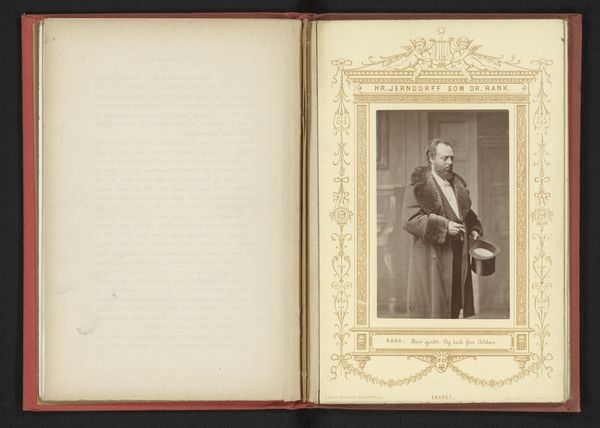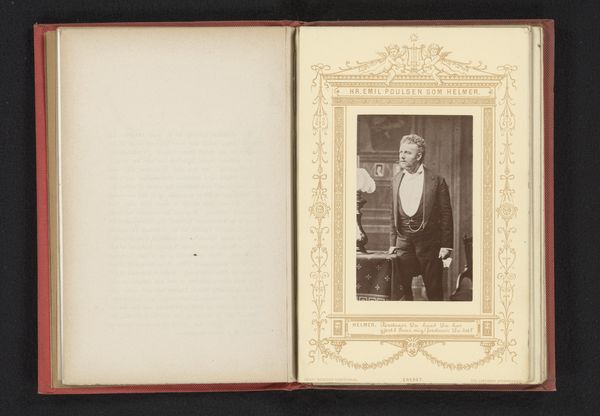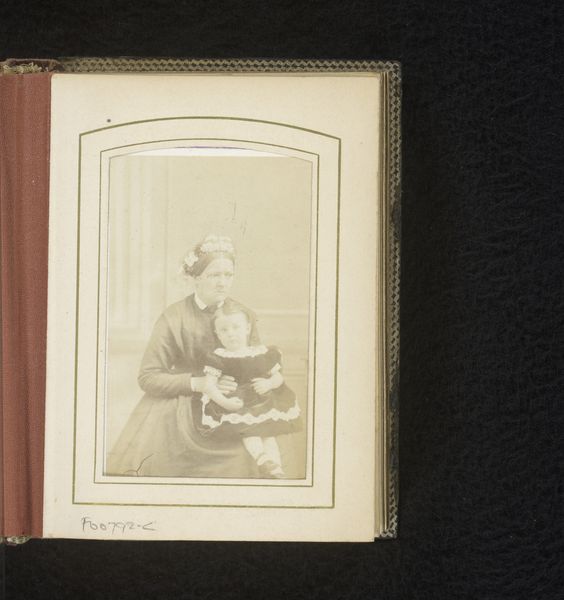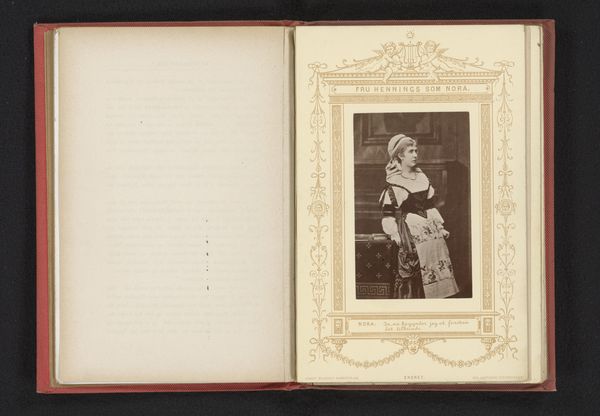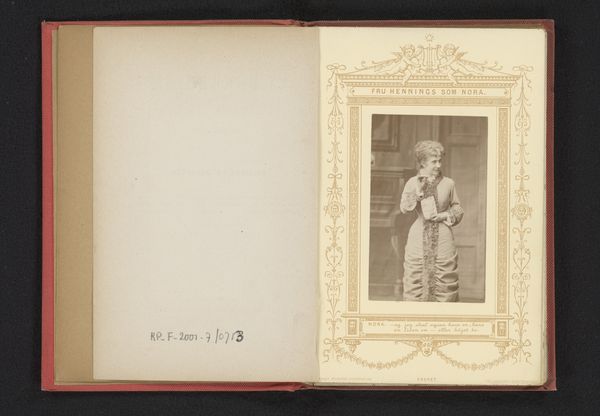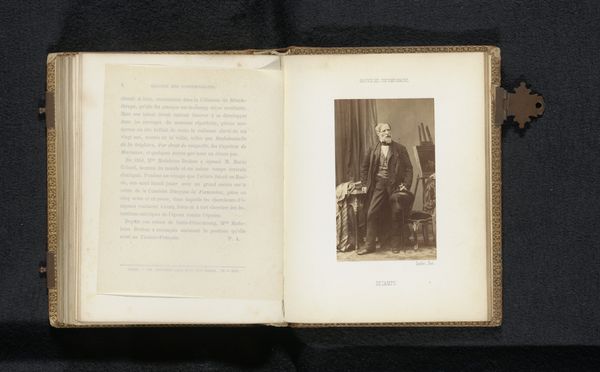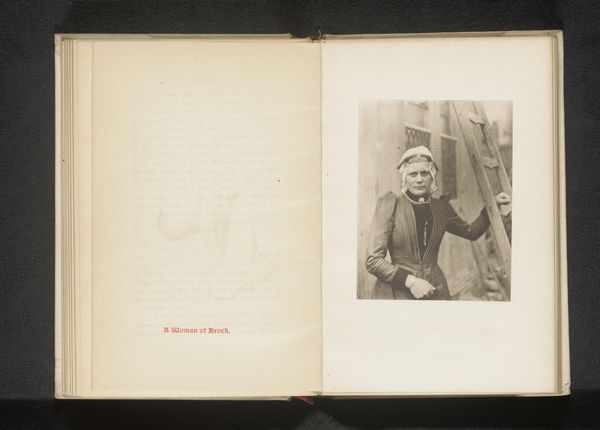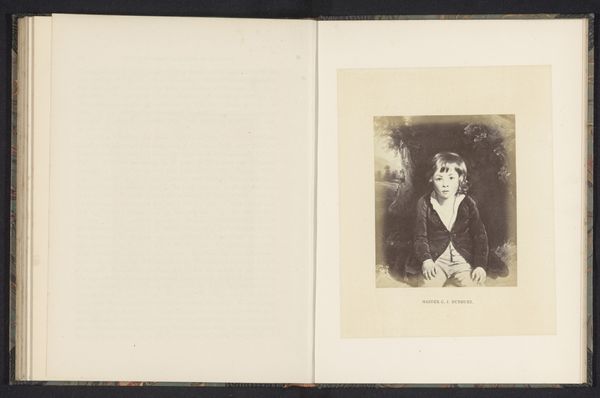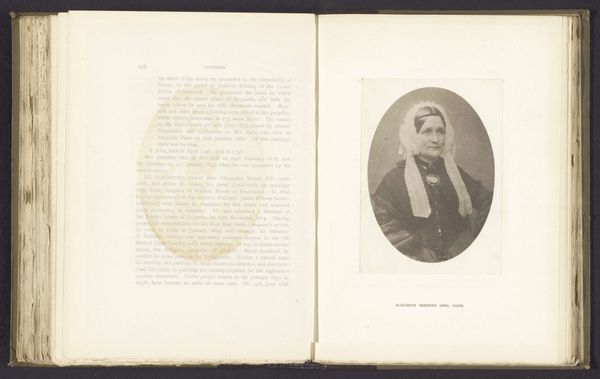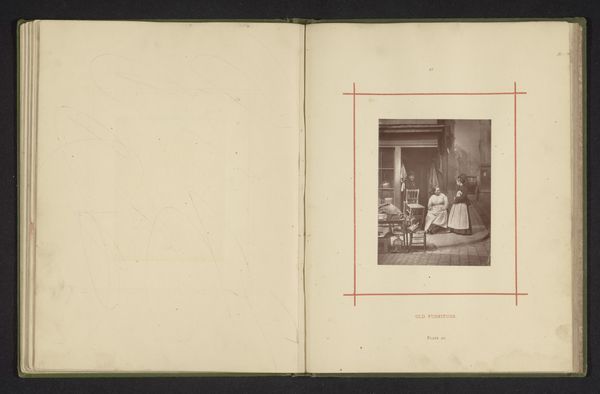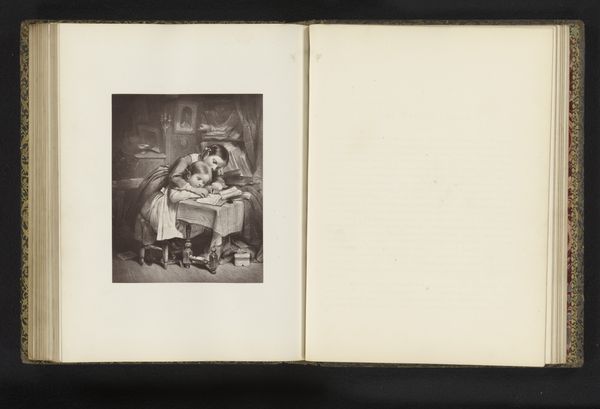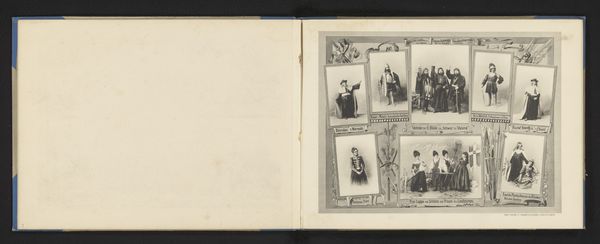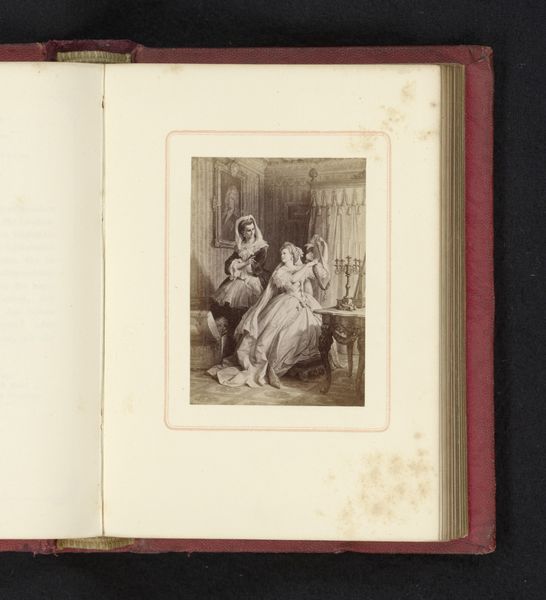
photography
#
portrait
#
photography
Dimensions: height 99 mm, width 63 mm
Copyright: Rijks Museum: Open Domain
Curator: This is a photograph dating from before 1880, portraying the actress Agnes Dehn as Christine Linde in Ibsen's "A Doll's House." It was taken by J.A. Schulz. Editor: It’s so formally staged, isn’t it? There’s a distinct, almost theatrical stiffness to her pose, framed so meticulously within that elaborate decorative border. She looks resigned, maybe even trapped. Curator: Absolutely. Early photography, especially portraits, were very deliberate events. The composition would have been highly considered. The backdrop, the lighting, the pose—all constructed to convey status and meaning. Theatre at that time was closely scrutinized; portraits like these granted performers social mobility. Editor: I'm struck by the choice to represent Dehn in character. This conflation of actor and role speaks volumes, right? Linde represents an independent woman, who consciously rejects love to care for family. Ibsen challenged rigid gender roles in marriage in 1879; and the artist represents a contemporary woman who takes on these new modes of behaviour in society. It asks us to consider to what extent we can play out these liberated scripts for ourselves in everyday life. Curator: That’s a great reading. It certainly speaks to how performative identity was becoming, especially for women who were increasingly in the public eye. There's a power dynamic here. Consider the photographic frame around the subject and the ornate frame to indicate the importance of the subject herself! We also witness an important, developing role for artists within modern capitalist consumerist society. Editor: And it prompts a discussion about authenticity too, I think. Does the staged nature of the photograph somehow diminish Dehn's own sense of self? Or does it, instead, highlight the carefully constructed facade expected of women in the late 19th century, both on and off the stage? She had an interior life, beyond these scripts of acting or performing womanhood. Curator: It's such a rich and complex representation. It provides a snapshot into the professional world for actresses in those days, as well as allowing us to ponder Ibsen’s dramas in photographic form. Editor: Precisely! This portrait isn't simply a representation, it is a statement about performance, womanhood, and identity.
Comments
No comments
Be the first to comment and join the conversation on the ultimate creative platform.
